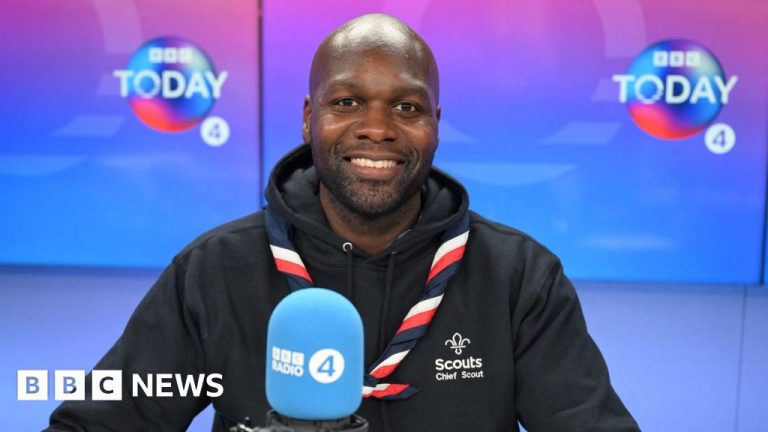Oleksandr Usyk has received a letter from a Ukrainian soldier fighting the war against Russia ahead of his rematch with Tyson Fury this weekend.
The 37-year-old will go into the clash as the favourite to reign supreme, having won all 22 of his career bouts so far.
Usyk won the first showdown via split decision, with the veteran producing a vintage performance to reign supreme.
And as he prepares to face Fury for a second time, the boxing star has received a letter from a Ukrainian solider fighting in the war against Russia.

Boxing news: Oleksandr Usyk has received a letter from a Ukrainian soldier fighting the war against Russia ahead of his rematch with Tyson Fury this weekend
DAILYMAIL
While opening Christmas gifts with the Daily Mail, Usyk read a letter that said: “Dear Mr. Oleksandr. My name is also Oleksandr, my callsign is ‘Shket (Kid/Lad)’. I am a fighter of the tactical special forces unit GRIM of the 41st separate brigade of the Armed Forces of Ukraine.
“My brothers and I watch all your fights whenever possible and wholeheartedly root for you.
“We are proud that the glory of Ukrainian boxing is now resounding so loudly.
“It has always been very important, and now every victory of Ukraine is priceless.
JUST IN: Darts star heavily booed after disappointing Ally Pally crowd on opening night of World Championship
“We know what hard work is and what every victory is worth, in the ring or in the steppes of Donbas.
“My brothers and I defended Kyiv, then fought at Bakhmut, liberated Kherson. You inspire us, and we will be worthy of Ukrainian glory and all who work for this.
“We are rooting for you. We wish you victory and success. This time we will root for you again.
“I hope you will feel our support even from afar. All our efforts will lead to the main thing – to our Common victory!
“We keep our fingers crossed for you, we pray, we wish you success! Together to victory!”
Usyk looked moved as he folded up the letter and took a deep breath before reading it out loud.
Responding, he stated: “This gives me extra motivation.
“This is a real man, a real soldier that is supporting my country, that is helping me and the people of Ukraine.
LATEST SPORTS NEWS:

Stream the long-awaited rematch between the two best heavyweights in the world, Usyk vs. Fury. The clash will see Tyson Fury aim to avenge his first-ever professional loss, as he fights Oleksandr Usyk in Riyadh, Saudi Arabia for the second time in a year. DAZN lets you stream across a range of devices, from iPhone, Android, iPad, Fire TV Stick, Roku, Samsung TVs, and many more. New users qualify for a free trial. The fight is also available to stream via Amazon’s Prime Video service too

Boxing news: Oleksandr Usyk powered his way to victory over Tyson Fury back in May
GETTY
“I’m very thankful to Oleksandr and our Ukrainian soldiers who are supporting my country and fighting to protect it. I do this for them.”
Usyk previously enlisted with the Kyiv Territorial Defence back in 2022 as he looked to support his country and their war efforts.
And he’ll be eager to do Ukraine proud when he steps out to face Fury in Riyadh, Saudi Arabia, on Saturday night.
Fury, for his part, seems to be relaxed.

Boxing news: Tyson Fury and Oleksandr Usyk will have their rematch on Saturday night
GETTY
The 36-year-old was frustrated to lose the first bout back in May and is adamant he’s got what it takes to topple his rival.
Usyk is, however, widely expected to secure another victory as he bids to etch his name into the boxing history books once again.
























+ There are no comments
Add yours